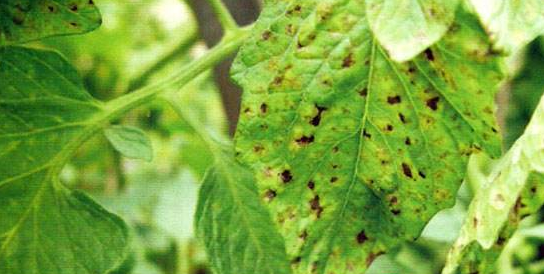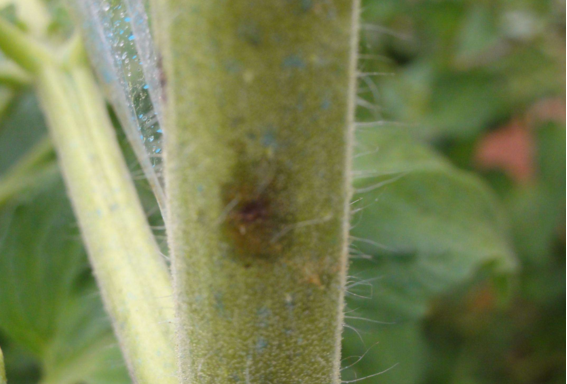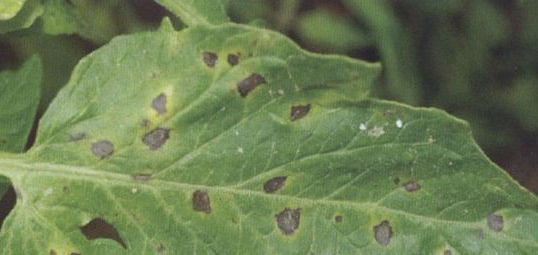Be wary of tomato bacterial spot disease in large areas
Tomato bacterial spot disease, also known as tomato bacterial leaf spot disease, spot disease, is a bacterial disease that mainly harms tomatoes. Its host is tomato and pepper, and tomato bacterial spot disease is a worldwide disease, which has become increasingly serious in northern China in recent years. In 2005, the author discovered that the disease occurred in Dingzhou. After tomato infection, the plant is slow to develop, the fruit is blocked or the young fruit is cracked, generally reducing production by 10% to 30%, and severely reducing yield by more than 50%. It poses a serious threat to tomato production, and hopes that the farmers will be vigilant and make good seeds before sowing. Treatment and future prevention and prevention work.

Pathogenic condition
The pathogen of tomato bacterial spot disease is Pseudomonas syringae pv. Tomato bacterial spot disease mainly affects tomato leaves, stems, fruits and fruit stalks, and can be infected at the seedling stage and adult stage. Infected by the leaves, the lower mature leaves first develop and then spread to the upper part of the plant. The initial onset of the disease produces dark brown to black irregular spots, with a diameter of 2 to 4 mm, with or without a yellow halo around the spots. Petiole and stalk symptoms and leaf symptoms are similar, producing black spots, but there is no yellow halo around the lesion. The lesions tend to form plaques, which can make a section of the stem darker in severe cases. When the flower bud is damaged, many black spots are formed on the bracts. When the flakes are contiguous, the bracts are dried and cannot bloom normally. The small spots in the early stage of the young fruit are slightly raised, and the skin around the lesions tends to remain green for a long time. The flesh near the lesion was slightly sunken, the lesion was black around, the middle color was shallow and there was a slight depression. Symptoms of bacterial spot disease are similar to those of tomato bacterial scab, and care should be taken to distinguish them. The main difference between this disease and bacterial scab is that the tomato does not rot after being infected by the disease, and the stem and leaf vascular bundle system and the xylem are not brown.

Law of occurrence
Seed-borne bacteria are the most important source of primary infection, and the bacteria can survive for 20 years on dry seeds. Seeding the seeds with the bacteria, the seedlings can be ill, and then passed to the field, and spread with the rain and farming operations. As long as 10% of the plants in the field initially develop, they can spread to the entire plot and become epidemic. Conditions below 25 ° C and conditions of relative humidity above 80% are favorable for the onset of disease, so tomatoes in winter and spring protection fields often cause serious damage. Usually, foliar moisturizing for more than 24 hours is conducive to the expansion of the disease, and is easy to occur in arid areas where sprinkler irrigation technology is employed. The bacteria can be overwintered on tomato plants, seeds, diseased bodies, soils and weeds (not obvious). Because the bacteria can survive the winter in the northern winter protection tomato, they are often directly from neighboring disease fields.

Control method
Strengthen quarantine to prevent the introduction of contaminated seeds into pest free areas.
Use disease-resistant varieties to establish disease-free seed fields and use disease-free seedlings.
Seed treatment should be done well before seeding. It can be soaked in cold water at 55 °C for 20 minutes, then transferred to cold water for cooling, removed and dried to germination.
Rotation with non-solanaceae vegetables for more than 3 years.
In the agricultural operations such as irrigation, pruning, snoring, and harvesting, care should be taken to avoid the spread of diseases. Try to use drip irrigation or furrow irrigation to avoid sprinkler irrigation as much as possible.
Chemical control starts spraying at the beginning of the disease, spraying once every 7 to 10 days, and continuously preventing 2 to 3 times. The medicine can be selected from 30% DT wettable powder 600 times liquid or 10% difenoconazole (Shigao) water dispersible granule 2000 times liquid, or 77% can kill wettable powder 400~500 times liquid, 1000 10,000 units of agricultural streptomycin 2000 to 3000 times liquid and other chemical control.
Teeth Whitening Machine,Desktop Model Tooth Light,Teeth Bleaching Machine ,Dental Teeth Whitening Machine
Foshan Ja Suo Medical Device Co., LTD , https://www.jasuodental.com
